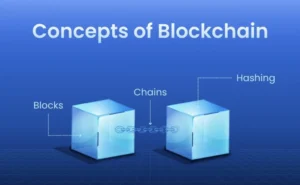
Block height is a key metric that underpins the functionality and integrity of blockchain networks. It represents the position of a block within the blockchain, providing a crucial reference point for tracking the sequence and history of transactions. The significance of block height extends beyond simple record-keeping; it impacts consensus mechanisms, blockchain security, and the development of decentralized applications.
What is Blockchain Block Height?
The term “Block Height” refers to the position of a block within the blockchain. Essentially, it represents the number of blocks that have been added to the chain before a given block. Block height is a critical metric for blockchain development companies, as it helps in tracking the progression of the blockchain and ensuring that all participants are synchronized with the latest version of the ledger.
This metric is used to validate the sequence of transactions and blocks, which is essential for maintaining the integrity and security of the blockchain network. For a blockchain development company, understanding and managing block height is vital for optimizing blockchain performance and ensuring smooth operation of decentralized applications and services.
How to Track Block Height?
Tracking block height is crucial for monitoring the state and progress of a blockchain network. To effectively track block height, you can use several methods, each offering varying levels of detail and accessibility. Many blockchain consulting services provide tools and platforms that enable users to view real-time block height and other blockchain metrics.
One common approach is through blockchain explorers, which are online tools that allow users to search and view information about blocks, transactions, and addresses on a blockchain. These explorers display the current block height and can provide detailed information about each block, including timestamps and transaction details.
How Does Block Height Affect Blockchain Development?
-
Transaction Confirmation
Block height plays a crucial role in transaction confirmation times. As the height increases, the number of blocks added to the chain ensures that transactions become increasingly secure and less likely to be reversed.
-
Network Synchronization
For Blockchain Development Services, maintaining accurate synchronization across nodes is essential. Block height is used to verify that all participants have the same view of the blockchain.
-
Chain Security
Higher block heights generally indicate a more secure and established blockchain. As more blocks are added, the difficulty of altering the blockchain increases, enhancing its security.
-
Upgrade and Fork Management
Block height is important for managing upgrades and forks within the blockchain. Developers use block height to signal changes or upgrades to the network, ensuring that all nodes adopt new protocols or software updates at the appropriate block height.
Can Block Height Impact Transaction Processing Times?
Yes, block height can significantly impact transaction processing times. As blocks are added to the blockchain, transactions are confirmed and processed more efficiently. A higher block height indicates that more blocks have been validated and added to the chain, which generally means that transactions are being processed at a consistent rate. However, during times of network congestion or high transaction volume, block height alone might not speed up processing times. In such cases, Blockchain Consulting Solutions and BRC-20 token development often help optimize network performance and transaction throughput to ensure efficient processing and reduce delays.
What Tools and Technologies are Used to Monitor Block Height?
-
Blockchain Explorers
These are web-based tools that provide real-time access to blockchain data, including block height. They allow users to search and view information about blocks, transactions, and addresses on a blockchain.
-
Node Software
Running a full node of the blockchain network enables users to directly track and monitor block height.
-
API Services
Various APIs offer access to blockchain data, including block height, which can be integrated into applications or platforms for real-time monitoring. A blockchain consulting company, often utilizes these APIs to provide customized solutions.
-
Blockchain Analytics Platforms
These platforms provide advanced tools and dashboards for monitoring blockchain metrics, including block height. They offer insights into network performance and transaction trends.
-
Custom Monitoring Solutions
It may develop bespoke tools and systems for monitoring block height, tailored to specific business needs and network requirements.
Can You Imagine a Blockchain Without Block Height?
Block height essentially denotes the position of a block in the blockchain, starting from zero for the first block, known as the genesis block. Without block height, tracking the chronological order of blocks would become an impossible task. Each block’s position in the chain—marked by its height—ensures that every transaction is recorded in the correct sequence, enabling the blockchain to function as a reliable and immutable ledger.
What are the Implications of Block Height for Blockchain?
Block height has several important implications for blockchain networks. It indicates the number of blocks that precede a given block, which is crucial for maintaining the integrity and sequence of the blockchain. A higher block height generally reflects a more established and secure blockchain, as it shows that many transactions have been processed and confirmed. Additionally, block height impacts synchronization across nodes, ensuring that all participants have a consistent view of the blockchain. For custom blockchain development services, managing block height is essential to ensure smooth operation, handle upgrades, and optimize transaction processing to meet specific business needs.
How Does Nadcab Labs Assist with Block Height-Related Issues?
Nadcab Labs, as a leading blockchain development company is well-equipped to tackle the complexities associated with block height. Our expertise extends to ensuring seamless synchronization across blockchain networks, which is vital for maintaining accurate block height and overall blockchain integrity. We provide custom blockchain development services that include designing and implementing solutions to handle block height efficiently, whether it’s for scaling the blockchain or addressing issues related to network forks and synchronization.






